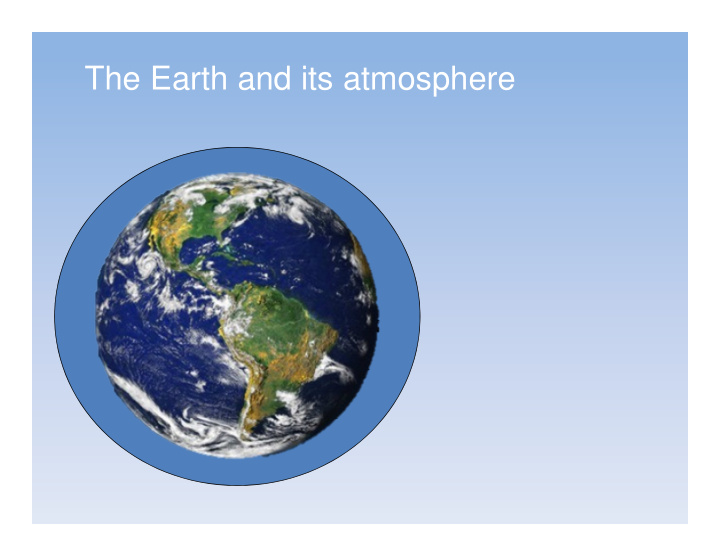



The Earth and its atmosphere
The most potent greenhouse gas is H 2 O - vapor The large H 2 O greenhouse effect is controlled by temperature – H 2 O saturation doubles with every 10°C Increase As a result It is concentrated in the lower atmosphere of the tropics
The CO 2 greenhouse gas effect is concentrated in the polar regions ! ! ! Particularly in the Arctic ! CO 2 is evenly distributed throughout the atmosphere
Only ~2% stays in atmosphere ~2% warms the land Melting ice absorbs ~2% John Cook, from IGPP 2007 data; ~93% to oceans continues (NOAA/NODC, 2012)
Change in heat content, 1958-2011 20 5-year moving averages Oceans, 0-700 m depth 15 10 22 Joules Oceans, 700-2000 m depth 10 ( Increasing heat, not shown, goes deeper 5 than 2000 m) 0 Atmosphere + land + ice melting -5 1960 1970 1980 1990 2000 (NOAA 2012 data, Nuccitelli et al. 2012 plot)
0.8562 m 3 (95 cm x 95 cm x 95 cm)
@ 30 o C +1 o C = 8% increase in vapor 10 o C = 20 o C = 30 o C = 40 o C = (50 o F) (68 o F) (86 o F) (104 o F) 7.8 cc 15 cc 27.7 cc 49.8 cc
Climate Changes from Ocean Sediment Cores, since 5 Ma. Milankovitch Cycles the last time inferred temperatures will have been this high – once equilibrium is reached, will have been 41K 100 K 3-5 million years ago or more * we are now about here 4.0Ma 5.0Ma 3.0Ma 1.0Ma 0 2.0Ma When CO 2 levels get below ~400-600 ppm Orbital parameters become more important than CO 2
China has the largest fossil fuel emissions today. However, climate change is driven by cumulative emissions, so developed nations, especially the U.S., have greatest responsibility. http://www.columbia.edu/~jeh1/
Recommend
More recommend